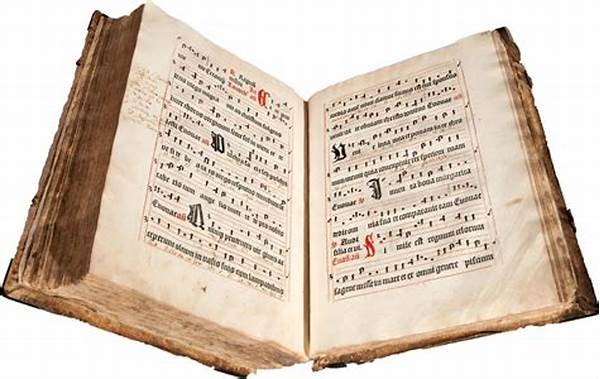Hey there, music enthusiast! Have you ever found yourself in a serene moment, sitting quietly in a cathedral, and wondered about the origins of the divine symphonies echoing in such sacred spaces? If you’re nodding along, then you’re in for a treat. We’re about to dive deep into the fascinating journey of liturgical music, its transformation through the ages, and the cultural phenomena it’s become today.
Read More : Connecting Souls Through Radio Broadcasts
The Beginnings of Liturgical Melodies
Stepping back to the early days, the evolution of liturgical music was quite a journey. Picture this: ancient congregations gathered, their voices intertwining in a monophonic chant that resonated through stone-walled churches. Initially, liturgical music was rather unadorned, with simple melodies that carried spiritual texts clearly and effectively. As centuries passed, the music began to weave in more complexity, harmonies, and instrumentation. This transformation mirrored shifts in theological thought and the changing tides of cultural influence. The fascinating thing about the evolution of liturgical music is how it remained deeply rooted in its purpose of worship while adapting to the evolving musical landscapes and innovations brought on by different eras. Just as society progresses, so too does its musical expression, making this evolution a testament to creativity and devotion throughout history.
Key Developments in Liturgical Music
Influence of Cultural Changes
Liturgical music didn’t evolve in isolation; it’s intertwined with the social and cultural shifts of its time. Imagine the evolution of liturgical music during the Renaissance. This era, marked by a resurgence of art and humanism, infused religious compositions with richer textures and emotional depth. The Enlightenment further transformed the landscape, emphasizing individual spirituality and broadening musical expression within worship. The evolution of liturgical music reflects not just religious sentiments but also the zeitgeist of each period. Moving into the 20th century, the embrace of world music elements and electronic innovations showcases how liturgical music continues to be a dialogue between tradition and contemporary practice. This ongoing journey highlights music’s incredible ability to transcend boundaries, embrace diversity, and adapt while maintaining its sacred essence.
Modern Adaptations and Innovations
The Role of Technology in Music’s Evolution
Today, the role of technology in music’s evolution, including liturgical music, is undeniable. Once upon a time, the spread of these sacred tunes required extensive hand-copying of manuscripts. Fast forward to now—songs can go viral with a simple click! The digital revolution has democratized access to music, offering platforms to share countless renditions and styles. The evolution of liturgical music embraces these tech advancements by incorporating them into its dissemination and performance practices. Streaming services, online choir collaborations, and even virtual reality church services illustrate how embracing technology furthers the reach and resonance of these age-old traditions. Technology not only amplifies the voice of worship but also ensures its preservation and continuous reinvention for future generations.
Future Directions of Liturgical Music
Where do we see the evolution of liturgical music heading next? One potential direction is heightened personalization, where worshipers experience music tailored to specific cultural or spiritual contexts. The interplay between traditional and modern elements may lean towards immersive soundscapes, using advanced technologies to deepen communal worship experiences. Additionally, as global connections continue to grow, the fusion of diverse musical traditions within liturgical settings is likely to become even richer. This ever-expanding tapestry reflects both historical roots and innovative pathways, ensuring the dynamic journey of liturgical music remains vibrant. By embracing new ideas while honoring age-old practices, this musical evolution continues to inspire and spiritually uplift communities worldwide.
Read More : Online Streaming Of Worship Songs
Reflecting on Liturgical Tradition and Innovation
For anyone curious about how music can so profoundly touch the soul, the evolution of liturgical music offers remarkable insights. It’s a testament to music’s timeless power to convey human emotion and devotion. While the core aim remains—supporting spiritual connection—its expressions have grown in color, complexity, and capacity. Liturgical music symbolizes a continuous dialogue between the past and present, inviting everyone to appreciate its sacred beauty and adaptability. Whether you’re a devout follower or simply an admirer of its artistry, understanding this evolution enriches our comprehension of music’s role in shaping human experience. So next time you find yourself enveloped by these beautiful melodies, take a moment to appreciate the centuries of evolution in every note.
Concluding Thoughts on the Evolution
To wrap things up, understanding the evolution of liturgical music is much like tracing the history of human expression itself. It’s a story that extends beyond the sacred walls of churches into broader cultural milieus. Liturgical music’s journey showcases adaptability and the power of artistic expression to convey spirituality across centuries. From its beginnings in Gregorian chants to modern compositions, its transformative path tells of innovation, diversity, and the enduring human desire to connect with something greater. By continuing to evolve, liturgical music embraces both tradition and modernity, reinforcing its timeless relevance in our lives. This evolution not only enriches worship experiences but also highlights the universal language of music that unites us all.
